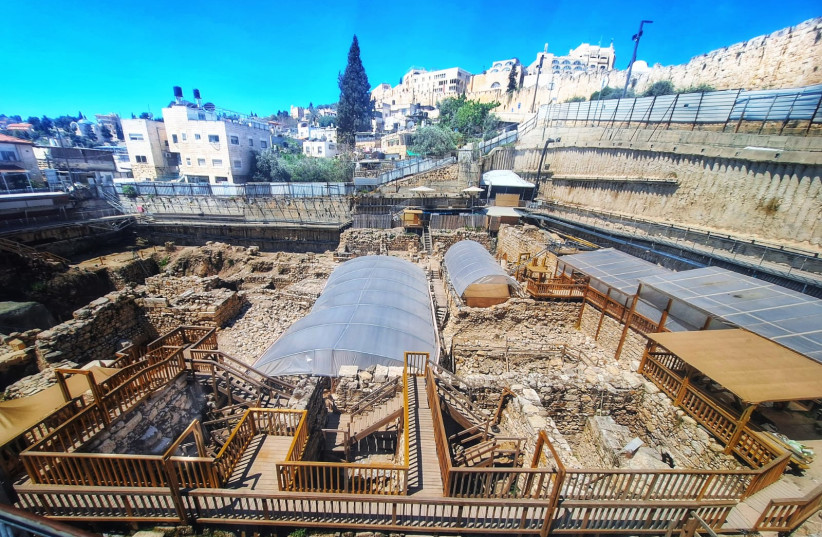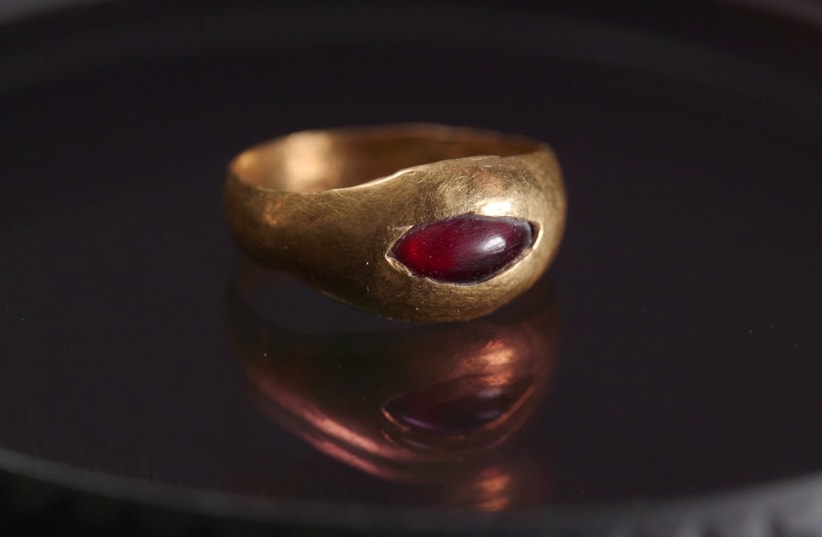
Israeli archaeologist discover 2300-year-old gold ring in the City of David
A 2300-year-old gold ring was discovered during a joint excavation in the City of David, conducted jointly by the Israel Antiquities Authority and Tel Aviv University.
The gold ring, dating back to the early Hellenistic period, was discovered by excavation team member Tehiya Gangate while sifting through excavated soil.
Tehiya Gangate described the moment she found the ring.

“I was sifting earth through the screen and suddenly saw something glitter,” she recounts. “I immediately yelled, ‘I found a ring, I found a ring!’ Within seconds everyone gathered around me, and there was great excitement. This is an emotionally moving find, not the kind you find every day. In truth, I always wanted to find gold jewelry, and I am very happy this dream came true – literally one week before I went on maternity leave.”
📣 Our WhatsApp channel is now LIVE! Stay up-to-date with the latest news and updates, just click here to follow us on WhatsApp and never miss a thing!!

IAA Excavation Directors Dr. Yiftah Shalev and Riki Zalut Har-tov say the ring is very small and could fit on a woman’s pinky finger or a young girl’s finger. Dr. Marion Zindel says the ring was produced by hammering pre-cut thin gold leaves into a metal ring base. Stylistically, it reflects the common fashion of the Persian and Early Hellenistic periods, dating from the late 4th century BC to the early 3rd century and beyond. At that time, people began to prefer gold with stones rather than ornate gold.
Professor Yuval Gadot of Tel Aviv University and excavator Efrat Bocher note that the recently found gold ring joins other ornaments from the early Hellenistic period found in the City of David excavations, including a horned animal earring and an ornate gold bead.
The ring will be on public display at the Jay and Jeanie Schottenstein National Campus for the Archaeology of Israel at the free “Jerusalem Mysteries” conference hosted by the IAA on Jerusalem Day.
Cover photo: Rikki Zalut Har-Tuv, one of the excavation directors, with the ring.
You may also like
- A 1700-year-old statue of Pan unearthed during the excavations at Polyeuktos in İstanbul
- The granary was found in the ancient city of Sebaste, founded by the first Roman emperor Augustus
- Donalar Kale Kapı Rock Tomb or Donalar Rock Tomb
- Theater emerges as works continue in ancient city of Perinthos
- Urartian King Argishti’s bronze shield revealed the name of an unknown country
- The religious center of Lycia, the ancient city of Letoon
- Who were the Luwians?
- A new study brings a fresh perspective on the Anatolian origin of the Indo-European languages
- Perhaps the oldest thermal treatment center in the world, which has been in continuous use for 2000 years -Basilica Therma Roman Bath or King’s Daughter-
- The largest synagogue of the ancient world, located in the ancient city of Sardis, is being restored











Leave a Reply